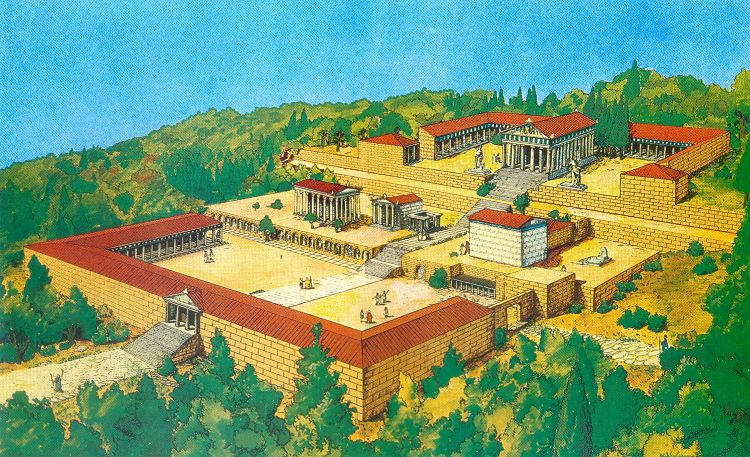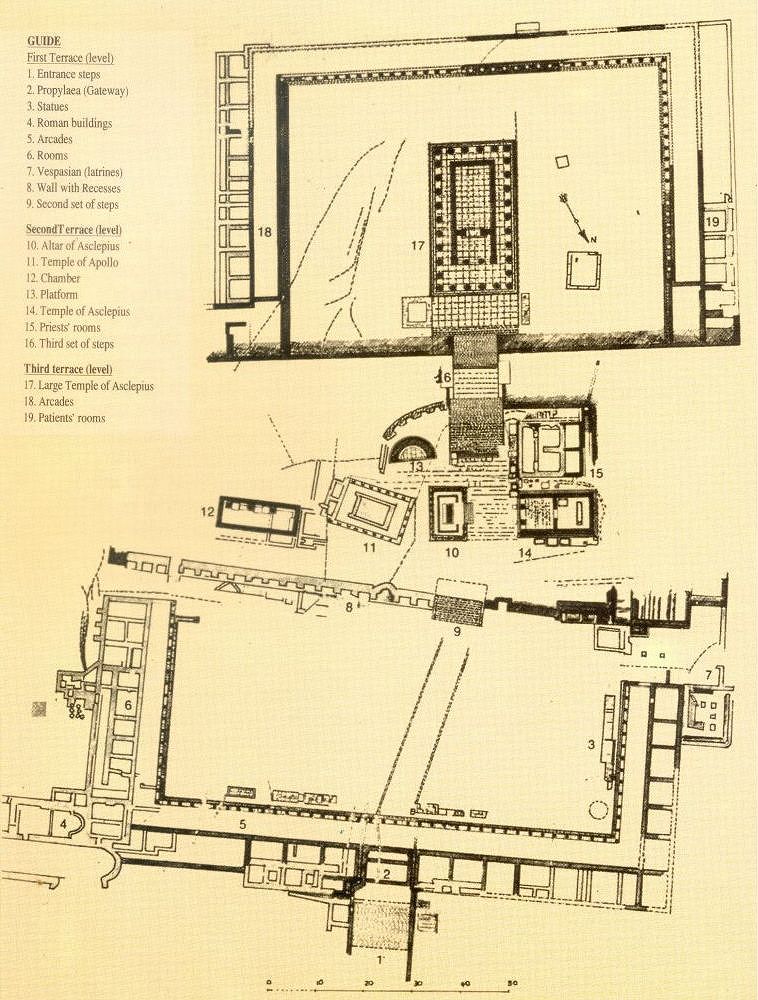Not far from Kos city is the Asklepieion, an ancient hospital, dedicated to the god of health, Asklepios. It was built in 357 BC. The sanctuary was one of the main seats of the Asklepiadai, supposed descendants of Asklepios, who were a hereditary close order of priests, jealous guardians of the secrets of medicine. The technique of healing differed from that at Epidauros and elsewhere, where cures were effected by suggestion. At Kos, as is revealed by inscriptions, patients underwent positive treatment at the hands of physicians on lines laid down by Hippocrates. The sanctuary had the right of asylum. It throve in the days of the Ptolemies and later under Nero. The rich court physician Xenophon (who helped to poison the Emperor Claudius), on his return to Kos, lavished on the sanctuary the statues he had amassed in Rome. Even in the late-Imperial period great baths were built. In the 6th century AD, all was overwhelmed, either by an earthquake or in 554 when Anatolian hordes ravaged the island. The Knights of St. John used the ruins as a quarry.
The sanctuary has several terraces. On the lowest level are Roman baths. The first terrace was surrounded on three sides by porticoes. On the fourth side was a retaining wall of massive proportions, part of which survives. Near the middle of the wall are a fountain, the staircase leading to the middle terrace, and several reservoirs fed by conduits from ferruginous and sulphurous springs and drawn upon by invalids taking the cure. Between the reservoirs and the staircase are the remains of a small temple, with the pedestal of a statue of Nero as Asklepios (the inscription records its dedication by the physician Xenophon). On this terrace were probably held the Asklepian Festivals which, on the evidence of inscriptions, included athletic games and other contests.
On the right of the middle terrace is a temple dating from the late 4th century or early 3rd century BC, and so the oldest temple in the sanctuary. The capitals, of painted marble, are exceptionally fine; the rest of the building was in white or black marble. In the floor of the cella was a coffer of marble slabs for the reception of votive offerings. The temple was adorned with paintings by Apelles, including the celebrated Aphrodite Anadyomene, removed by Augustus to Rome. Behind the temple is a Roman house on a Greek foundation, probably the priest's dwelling. In front of the temple, to the left, is the great altar, similar to that at Pergamon; it is in the form of an inverted U, with a central staircase. Its ceiling, partly surviving, was coffered; between the columns of the portico were statues of Asklepios, Hygieia, and members of their family, attributed to the sons of Praxiteles. To the left of the altar is a Roman temple, orientated aslant. It had half-fluted columns and a magificent entablature with floral decoration, part of which remains. In the wall at the end of the terrace is a monumental staircase, to the left of which is an exedra, with niches for statues.
The upper terrace occupies the site of the Sacred Wood. On it is the great Temple of Asklepios. In it was installed in the Christian era a chapel of the Panayia tou Tarsou, the altar of which survives. Three sides of the terrace were lined with porticoes, on which houses were later built.
After S. Rossiter, Blue Guide Greece, London 1977, p. 660-662.

Reconstruction drawing of the Asklepieion.
From: M.S. Kiapokas, Hippocrates of Cos and the Hippocratic Oath, Athens 1999, p. 247 (R. Herzog).

Plan of the Asklepieion.
From: M.S. Kiapokas, Hippocrates of Cos and the Hippocratic Oath, Athens 1999, p. 164.